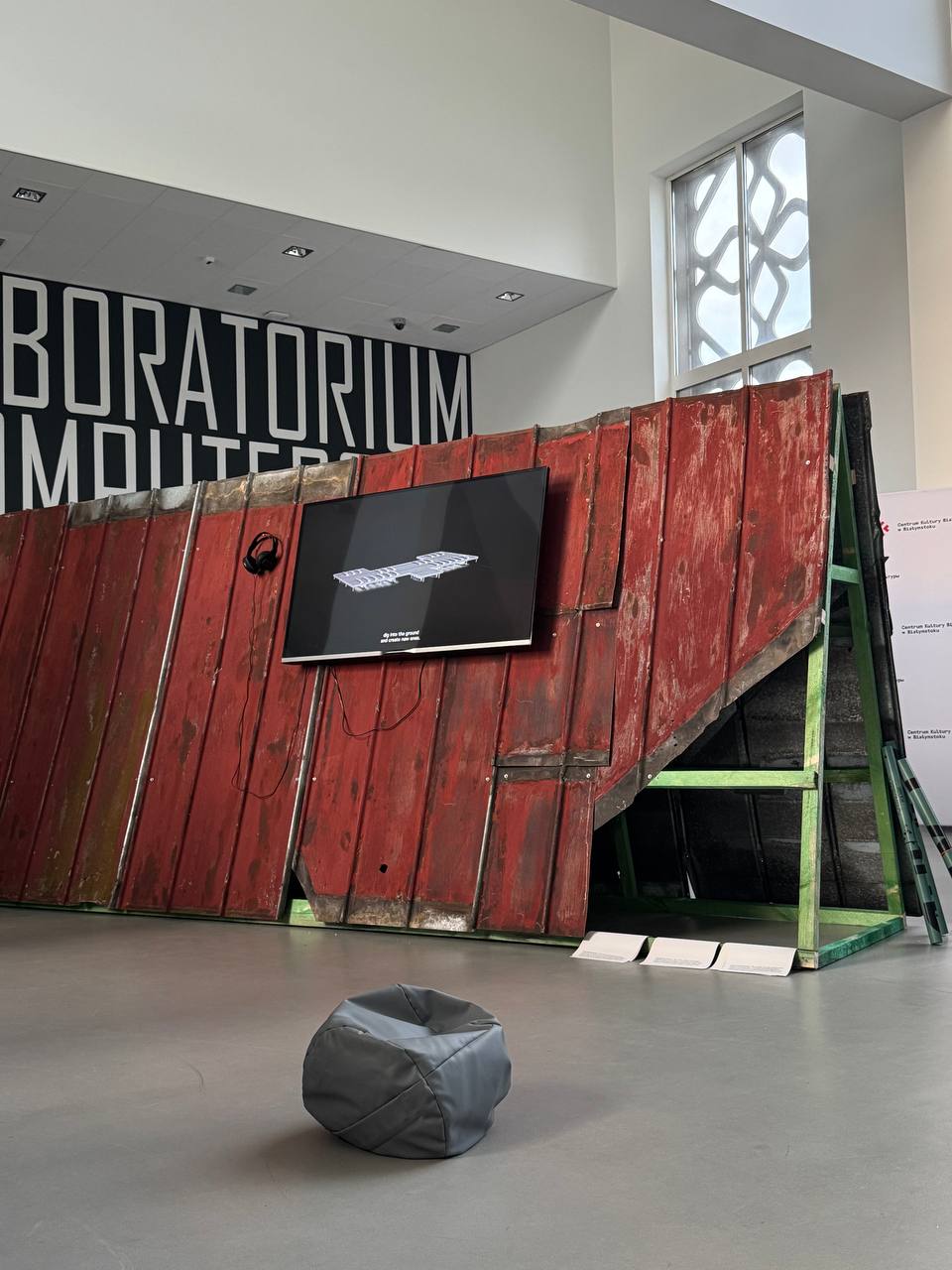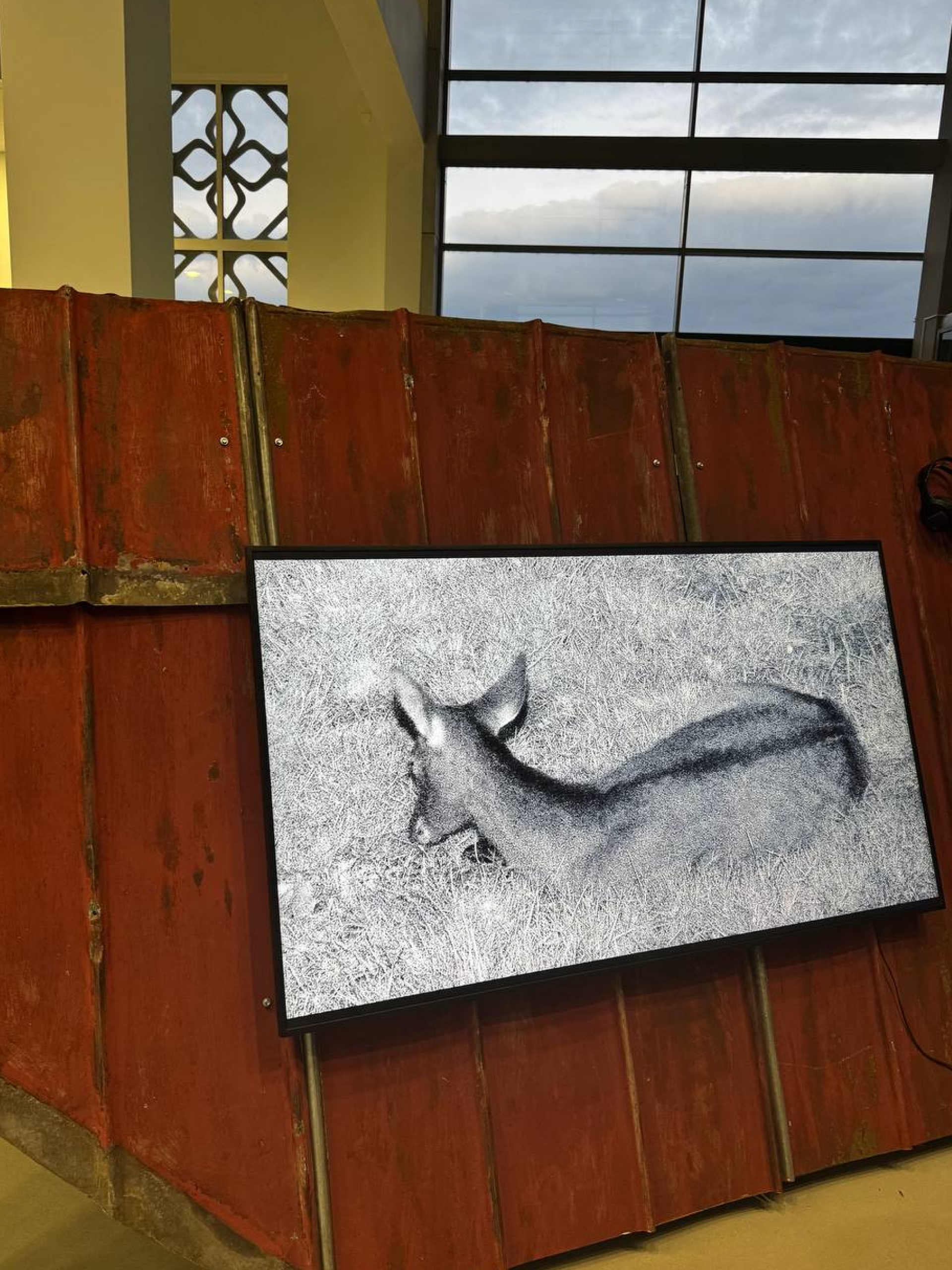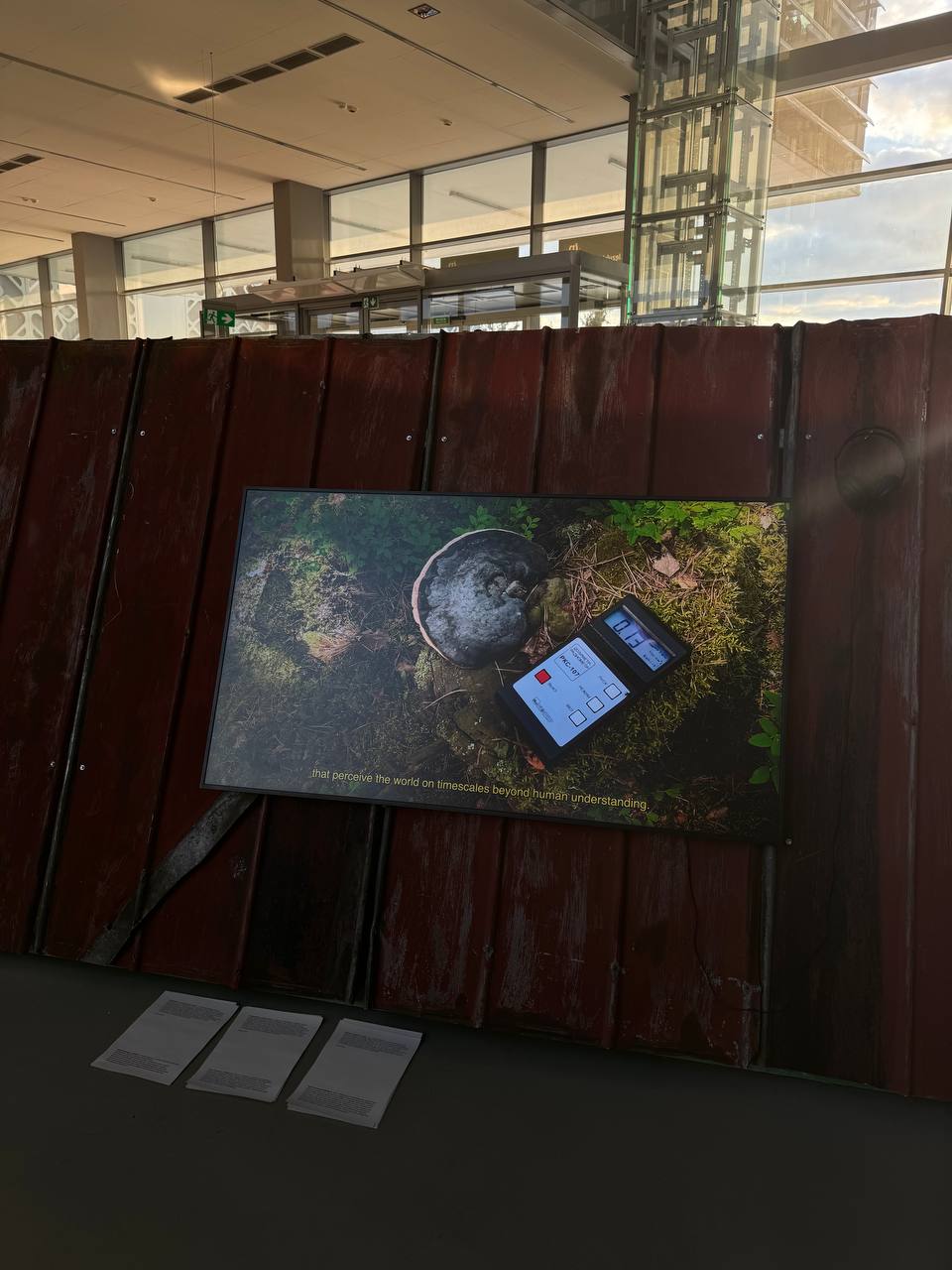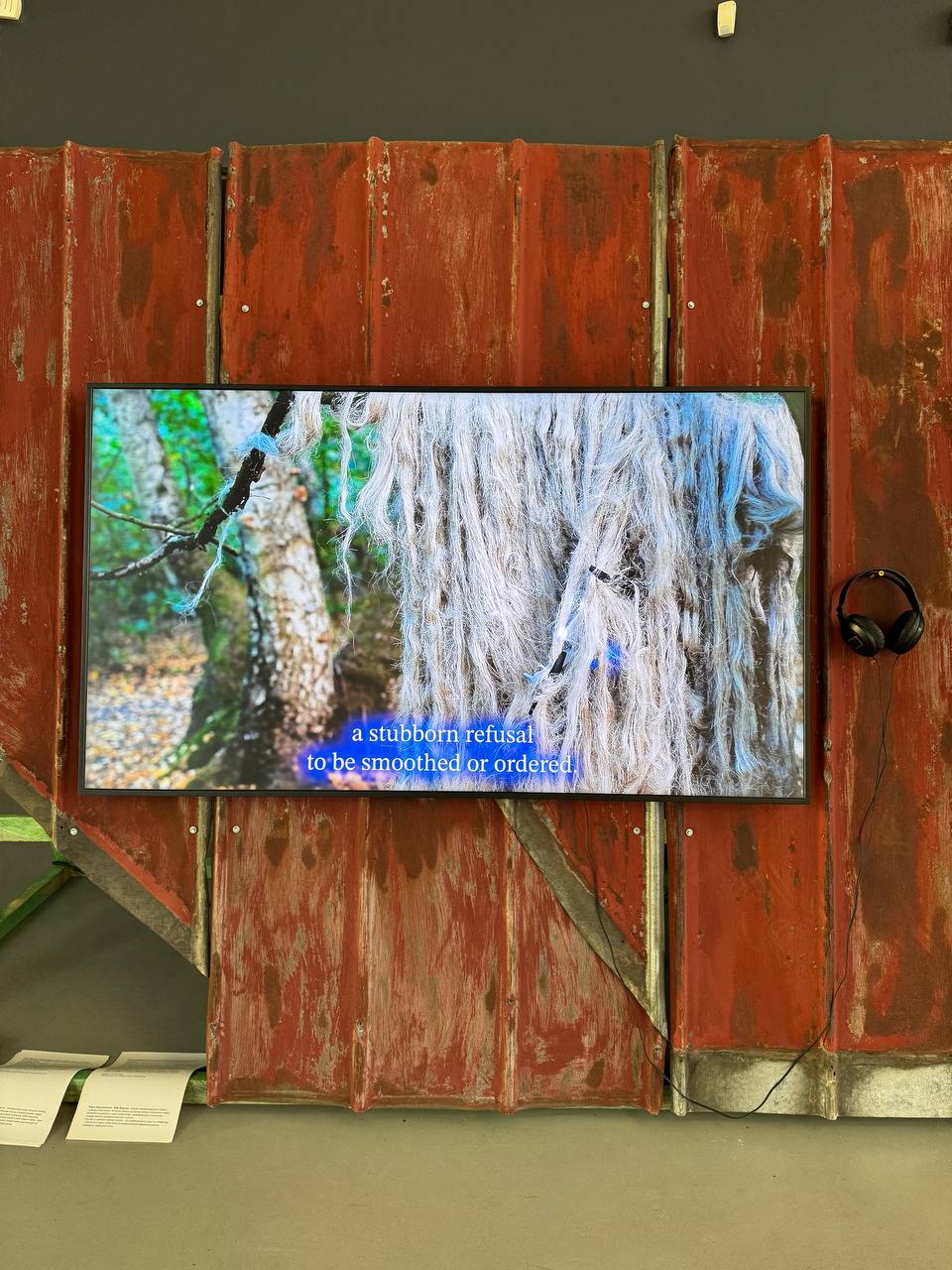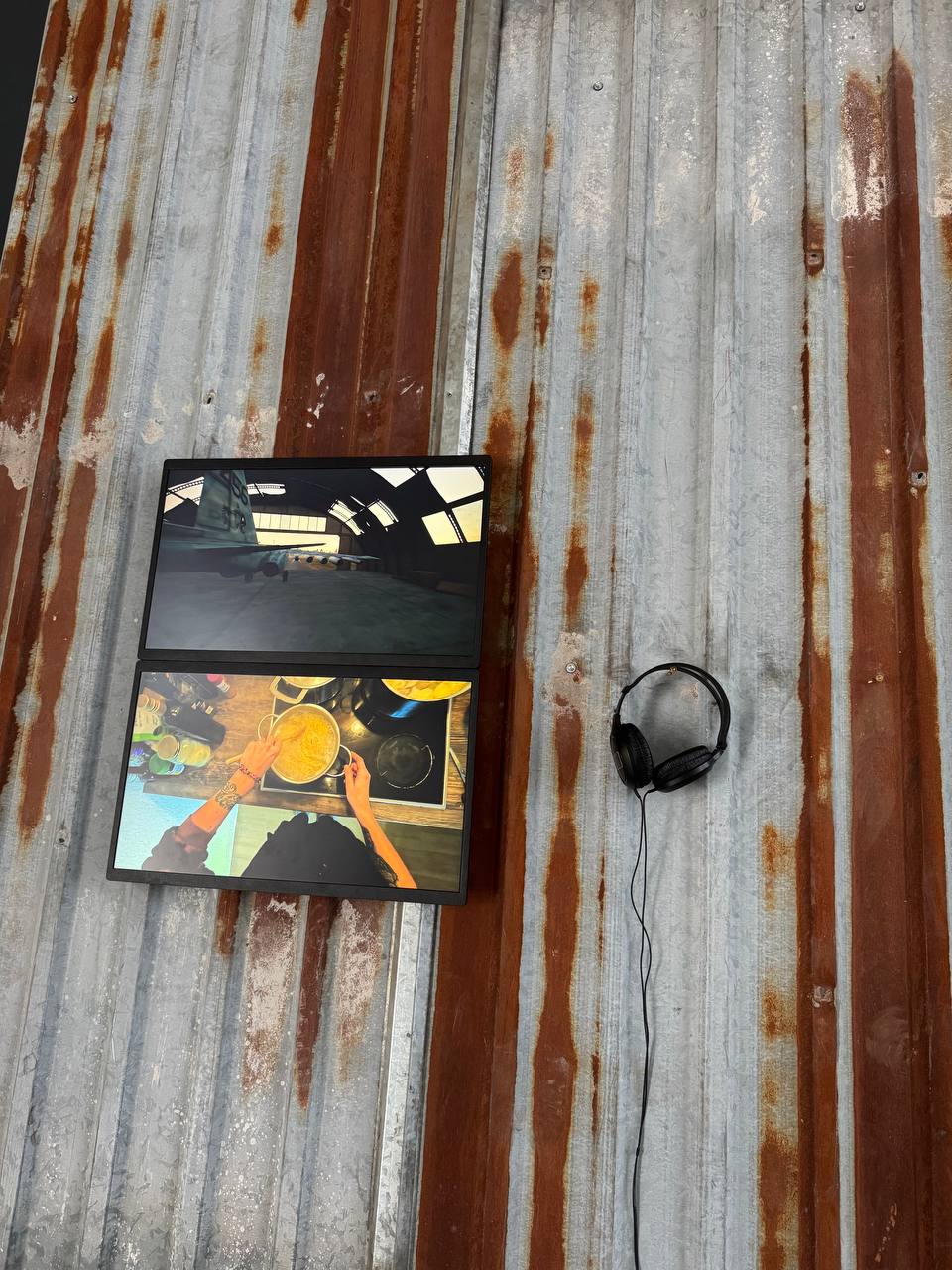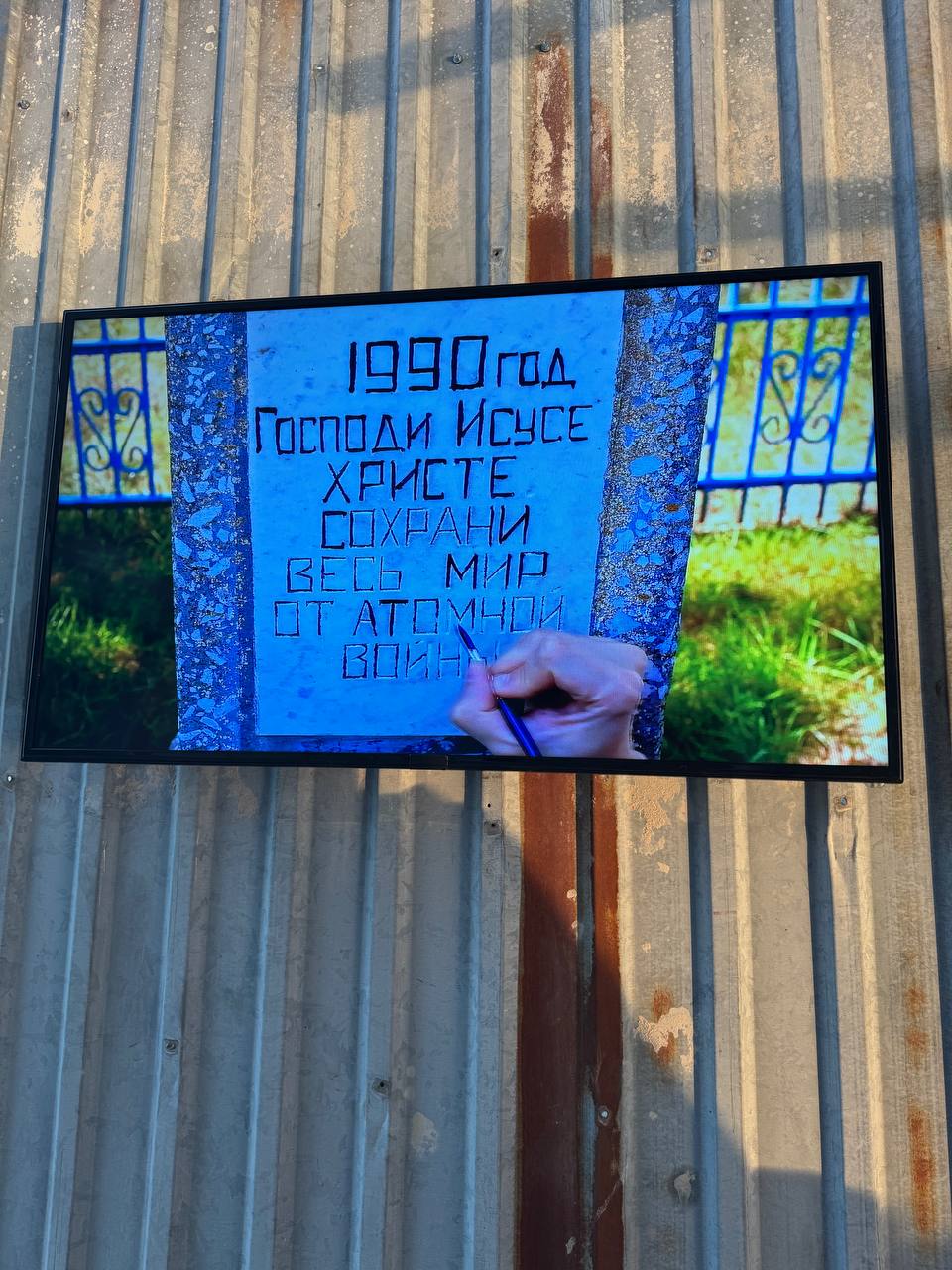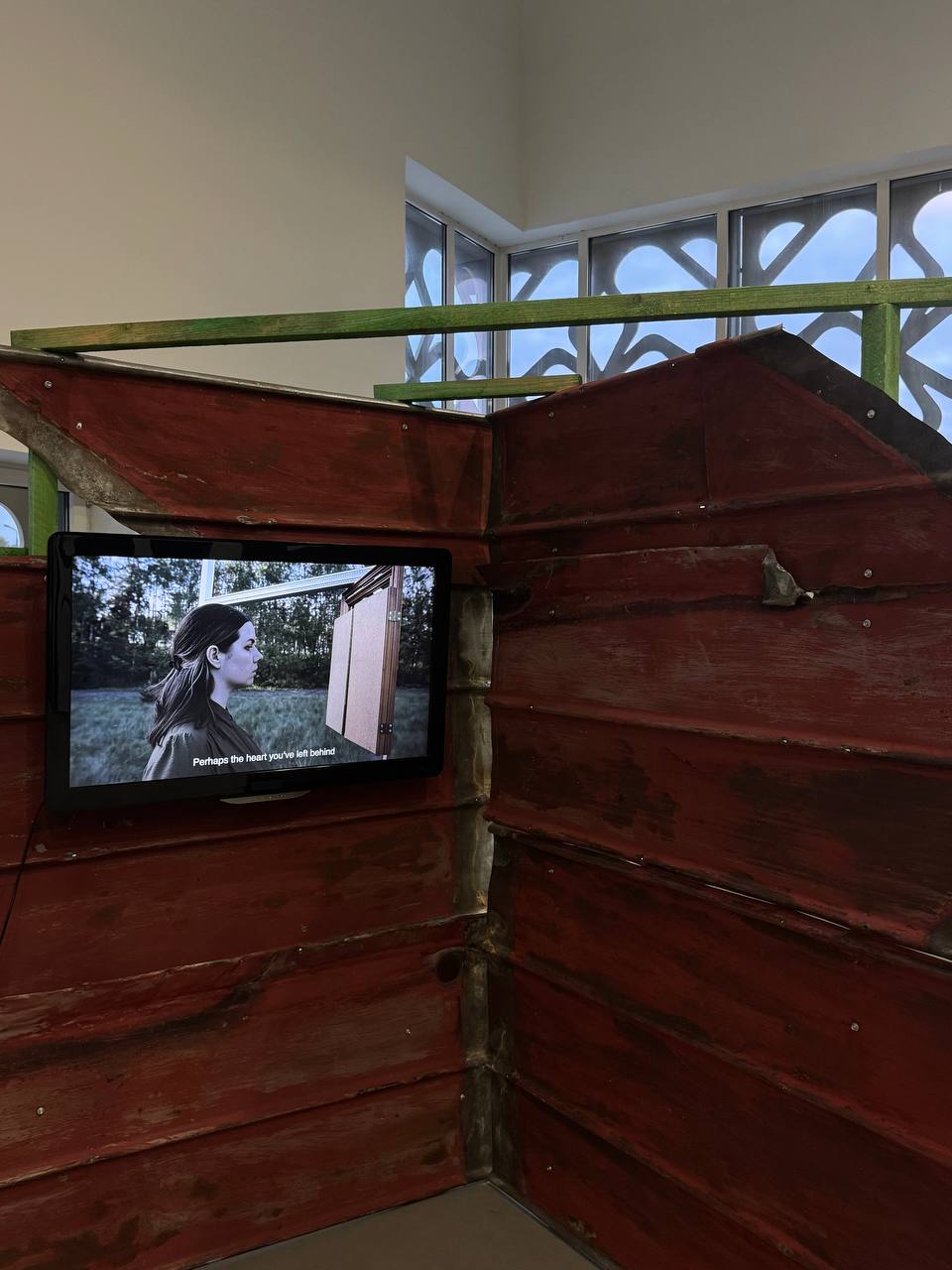SAMASIEJ
Festival of Belarusian contemporary video art
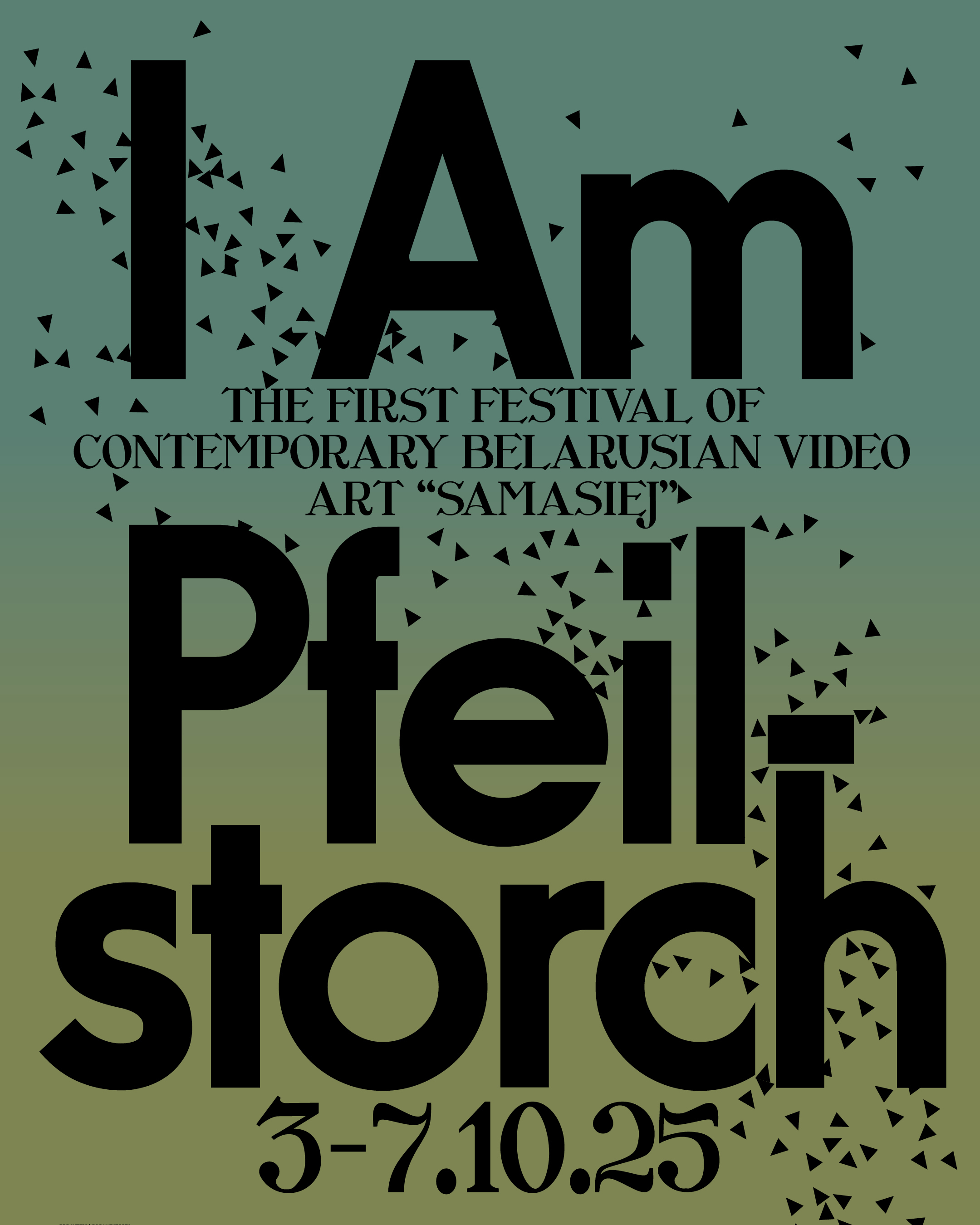
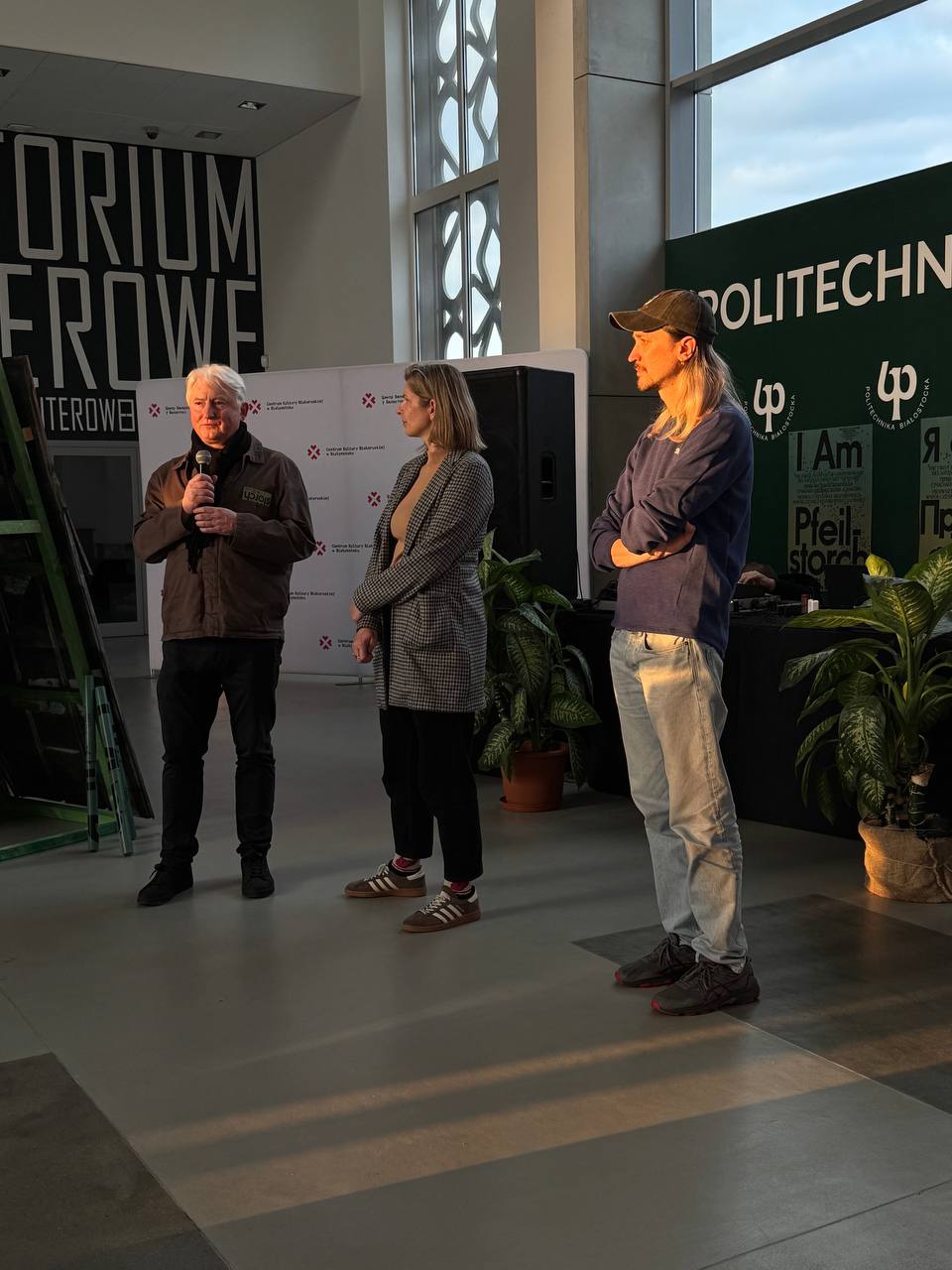
The first festival of Belarusian contemporary video art, the SAMASIEJ, took place. It was organized by the Center of Belarusian Culture in Białystok in collaboration with local and international partners, and with the support and initiative of the Mochnarte Foundation.
The first exhibition of the festival, titled “I am Pfeilstorch”, was curated by Uladzimir Hramovich.
In German, the word “Pfeilstorch” means “stork with an arrow.” It refers to storks that were wounded in Africa by a dart or arrow yet still managed to return to Europe in the spring to breed despite their injury.
The first and most famous Pfeilstorch was found in 1822 near the German village of Klütz. A spear from Central Africa was lodged in its neck. The bird was shot and later preserved through taxidermy.
This very Pfeilstorch became key evidence proving that birds undertake long seasonal migrations. Until then, people believed in myths — that birds hid underwater during winter or transformed into other creatures.
We are very pleased that some of the video works were created by the artists specifically during the Mochnarte residencies.
The festival’s name, SAMASIEJ, comes from the novel “Samosiej” (1981) by Sakrat Yanovich. Samasiej is a plant that grows on its own, regenerates, and thrives even in poor soil. For the festival organizers, it became a metaphor for culture that revives and flourishes even in the most adverse conditions.
The aim of the festival was to showcase the dynamics of contemporary Belarusian culture, document changes, stimulate dialogue, and find answers to questions such as: what contemporary Belarusian art looks like, where we are, and where we are heading.
︎︎︎ SAMASIEJ ︎
Artists:
Bergamot, Jura Shust, Nadzieja Sajapina, Julia Cwiatkowa, Roza Busel, Lesia Pczółka, Dasza Sazanowicz, Tania Liczewska, Tytus Szabelski-Rużniak, Ulad Bohan, Hanna Paniutsich
The first exhibition of the festival, titled “I am Pfeilstorch”, was curated by Uladzimir Hramovich.
In German, the word “Pfeilstorch” means “stork with an arrow.” It refers to storks that were wounded in Africa by a dart or arrow yet still managed to return to Europe in the spring to breed despite their injury.
The first and most famous Pfeilstorch was found in 1822 near the German village of Klütz. A spear from Central Africa was lodged in its neck. The bird was shot and later preserved through taxidermy.
This very Pfeilstorch became key evidence proving that birds undertake long seasonal migrations. Until then, people believed in myths — that birds hid underwater during winter or transformed into other creatures.
We are very pleased that some of the video works were created by the artists specifically during the Mochnarte residencies.
The festival’s name, SAMASIEJ, comes from the novel “Samosiej” (1981) by Sakrat Yanovich. Samasiej is a plant that grows on its own, regenerates, and thrives even in poor soil. For the festival organizers, it became a metaphor for culture that revives and flourishes even in the most adverse conditions.
The aim of the festival was to showcase the dynamics of contemporary Belarusian culture, document changes, stimulate dialogue, and find answers to questions such as: what contemporary Belarusian art looks like, where we are, and where we are heading.
︎︎︎ SAMASIEJ ︎
Artists:
Bergamot, Jura Shust, Nadzieja Sajapina, Julia Cwiatkowa, Roza Busel, Lesia Pczółka, Dasza Sazanowicz, Tania Liczewska, Tytus Szabelski-Rużniak, Ulad Bohan, Hanna Paniutsich
